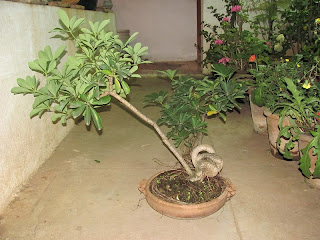
This tree happens to be one among my personal favourites. The thick trunck, the spreading branches and the graceful aging of the tree never fails to fascinate me. Watching it is absolute poetry. I often imagine I am a little person resting in the shade of this immense tree.
This tree has been grown in the Hokidachi style.












